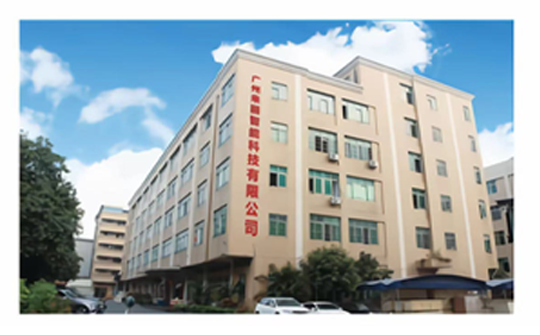
ABOUT
Established in 2001 and headquartered in Guangzhou, China, LolyPrint specializes in high-tech advertising equipment. As an industry innovator, we are dedicated to delivering advanced, systematic solutions designed to meet the diverse and ever-changing needs of our customers.
Our product portfolio includes a variety of cutting-edge equipment, such as DTF printers, UV DTF printers, solvent printer series,eco inkjet printers, Roll-to-Roll UV printers, 3D luminous letter printers, and textile printers. These products are widely utilized across industries like advertising signage, furniture, construction materials, and textile printing, among others.
PRODUCTS
Discover How DTG Technology is Transforming the Custom Fashion Industry with Unmatched Quality Speed and Creative Freedom for Designers and Brands
The fashion industry has always been a realm of creativity, innovation, and competition. In recent years, digital transformation has reshaped various sectors, and the custom fashion industry is no exception. Notably, Direct-to-Garment (DTG) technology is revolutionizing how designers and brands approach custom clothing. In this article, we will delve into how DTG technology is transforming the custom fashion landscape with unmatched quality, speed, and creative freedom, providing a comprehensive understanding of its implications for designers and brands.
Understanding DTG Technology
Direct-to-Garment (DTG) printing is a method that employs specialized inkjet technology to print directly onto textiles. Unlike traditional screen printing, which requires extensive setup and is most effective for bulk orders, DTG allows for quick and efficient printing of intricate designs even on a small scale. This technology utilizes water-based inks, which provide vibrant colors and exceptional detail. Furthermore, the process is environmentally friendly, reducing waste and chemical use compared to conventional methods.
DTG has made it possible for clothing brands and independent designers to offer unique, customized products that appeal to niche markets. As consumer demand for personalized fashion grows, DTG technology stands at the forefront, enabling creators to bring their visions to life with minimal barriers. The acceleration of e-commerce and online shopping has complemented this trend, as consumers seek one-of-a-kind pieces that reflect their individuality and style.
Unmatched Quality
When it comes to quality, DTG technology offers an edge that is hard to replicate. The printing process allows for high-resolution images and intricate designs that can accurately convey the creativity of the designer. Unlike traditional screen printing, where details can be lost in the process, DTG maintains the integrity of designs, providing a crisp and vibrant finish that elevates the garment.
Moreover, DTG printing utilizes water-based inks that penetrate the fabric rather than sitting on top of it. This results in a softer feel that enhances the wearability of the garment. Customers can enjoy stylish clothing without compromising comfort, making DTG an appealing choice for both new and established brands.
Speed of Production
In an era where speed is paramount, DTG technology excels. The traditional methods of clothing production often require lengthy times for setup, design approvals, and production runs. In contrast, DTG printing can produce garments in a matter of hours, significantly reducing the time from concept to customer. This rapid turnaround is increasingly crucial in a fast-paced fashion landscape, where trends can shift overnight.
For designers and brands, this speed translates to more flexibility in their operations. They can respond quickly to market demands or experiment with new designs without the fear of overproducing or incurring large upfront costs. Smaller brands, in particular, benefit from this agility, as they can test the waters with new ideas without the burden of large inventory investments.
Creative Freedom for Designers
DTG technology has dramatically expanded the boundaries of creativity for designers and brands. The flexibility of direct-to-garment printing allows for complex designs, multi-color graphics, and even photographic images to be rendered on fabric. Designers are no longer limited by the constraints of traditional printing methods, which often require simplified designs to ensure viability during production.
This creative freedom encourages designers to push their artistic boundaries and explore innovative concepts. The ease of customizing designs also fosters collaboration, allowing brands to work with artists, influencers, and customers directly. As a result, fashion becomes a more inclusive medium where diverse perspectives can thrive and influence trends.
Cost Efficiency and Sustainability
One of the most compelling aspects of DTG technology is its cost efficiency. While setup costs for traditional methods can be prohibitively expensive—especially for small batches—DTG eliminates the need for screens and extensive setup. Designers can produce small runs or even single items economically, making it feasible to offer limited editions or personalized pieces.
Environmental sustainability is another vital consideration in the custom fashion industry. With increasing awareness of the fashion sector’s impact on the environment, DTG printing emerges as a more sustainable alternative. The technology significantly reduces waste since it prints only what is required. Additionally, the use of water-based inks minimizes harmful chemical usage, aligning with consumer preferences for eco-friendly products.
The Future of Custom Fashion with DTG
As DTG technology continues to evolve, its role in transforming the custom fashion industry will likely expand further. Innovation in printing technologies, improvements in ink formulations, and advancements in textile quality guarantee that designers will have access to even better tools for their creative endeavors.
In conclusion, DTG technology is not merely a trend; it represents a paradigm shift in the custom fashion sector. With unparalleled quality, swift production times, and the creative freedom it offers, DTG stands to empower designers and brands in elevating their offerings. As the demand for personalized, unique fashion experiences grows, those who embrace DTG technology will undoubtedly lead the charge in redefining the future of the industry.
SUBSCRIBE
INQUIRY








